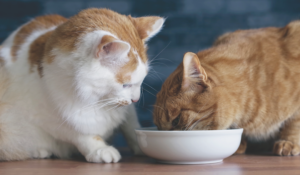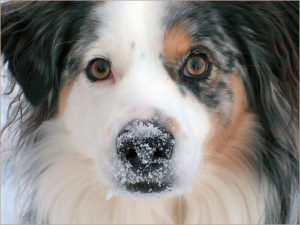
To address any concerns, veterinary clinics are NOT restricted to urgent care only under Ontario’s new color-coded system, which specifies lockdown conditions under the color designation grey. The misinformation resulted from an incorrect article published by The Toronto Star on Nov. 21st, 2020. (They have since published a correction.) The OVMA successful lobbied to have veterinary clinics exempt from conditions requiring other businesses to shut down to help combat a second COVID wave. This means, should this happen, we will be open to take care of your pet.
Is Mealtime Causing ‘Issues’?
 “Indoor cats can easily become stressed with any changes in their environment, such as a new pet addition, a change in the owner’s schedule or a change in feeding schedules,” says Dr. Jessica Herman, a veterinarian with Fuzzy Pet Health with a practice in Shelbyville, Kentucky. “Feeding cats is more than simply filling the food bowl once or twice daily. Feeding cats should be considered a part of their environmental enrichment.”
“Indoor cats can easily become stressed with any changes in their environment, such as a new pet addition, a change in the owner’s schedule or a change in feeding schedules,” says Dr. Jessica Herman, a veterinarian with Fuzzy Pet Health with a practice in Shelbyville, Kentucky. “Feeding cats is more than simply filling the food bowl once or twice daily. Feeding cats should be considered a part of their environmental enrichment.”
Stress at mealtimes can cause some cats to:
- Hide
- Lose their appetites
- Gorge their food quickly
- Drool
- Eliminate outside the litter boxes
- Claw couches
- Overgroom to the point of creating red, bald spots on their coats
- Fight with other pets in the home
Medically, mealtime stress can cause such ailments as:
- Urinary tract infections
- Feline idiopathic cystitis
- Weakened immune systems
- Skin diseases
The Importance of Winter Grooming: Follow Our Four Tips!
 There’s a common misconception that dogs don’t need to be groomed, or only groomed minimally, over the winter months. The (erroneous) belief is that a dog’s winter coat comes in and should be allowed to grow long to protect and warm the dog. In addition, because dogs, like humans, often follow a more sedentary and inside routine in the winter, many people feel that their dogs aren’t getting dirty enough to warrant bathing. But this is simply not true. In fact, in many ways, grooming over the winter months becomes even more important to the health of your dog than at any other time of the year. Long, wet, matted hair easily makes a cold, wet, and infection-susceptible dog.
There’s a common misconception that dogs don’t need to be groomed, or only groomed minimally, over the winter months. The (erroneous) belief is that a dog’s winter coat comes in and should be allowed to grow long to protect and warm the dog. In addition, because dogs, like humans, often follow a more sedentary and inside routine in the winter, many people feel that their dogs aren’t getting dirty enough to warrant bathing. But this is simply not true. In fact, in many ways, grooming over the winter months becomes even more important to the health of your dog than at any other time of the year. Long, wet, matted hair easily makes a cold, wet, and infection-susceptible dog.
While it’s true that double-coated breeds and others with thick, long fur are more winter-ready than short-haired dogs, the “blessing” of these thick coats in winter can turn quickly into a curse if the fur isn’t maintained in a healthy condition. Fur that’s matted doesn’t insulate or provide warmth; instead, it provides discomfort, pain, and hot spots. Matting can even lead to infections below the skin, so when considering the effects of letting the grooming go, consider how your dog’s health may in fact suffer as a result. Grooming isn’t just for a beautiful dog (though this is obviously one noticeable effect), it’s also crucial for your dog’s good health.
Winter pitfalls to your dog’s coat and skin include:
- Dry forced-air heat
- Bitter, cold temperatures
- Wind
- Snow and ice
- Dampness
- Salt and sand used on streets and sidewalks
Simply follow these four grooming rituals through the winter to combat these winter blahs, and ensure that your dog stays comfortable, dry, and healthy!
